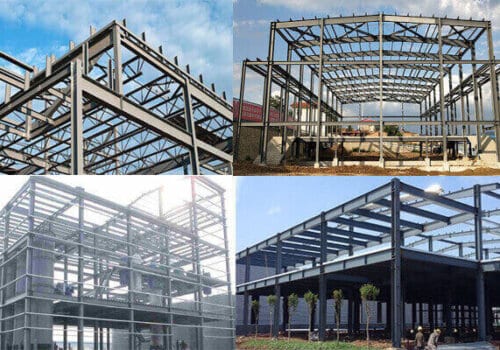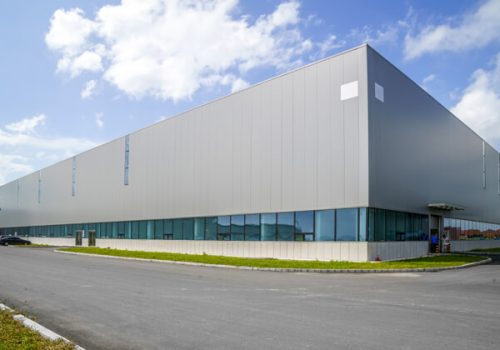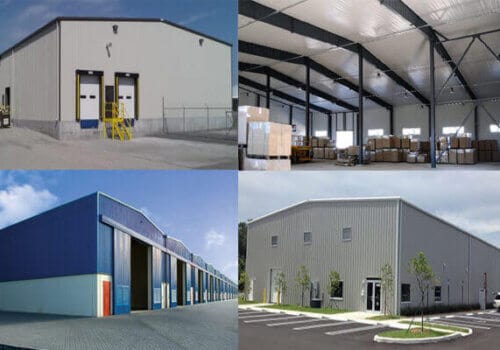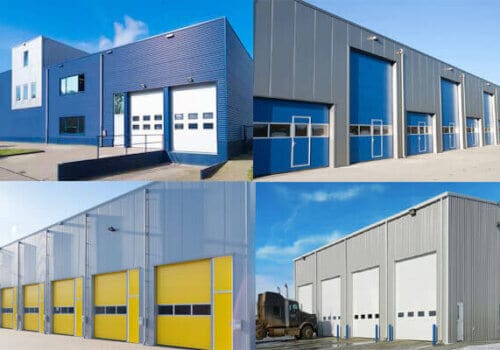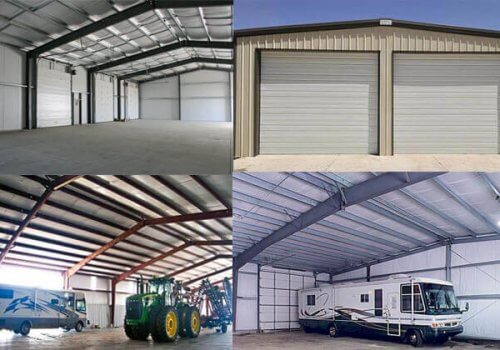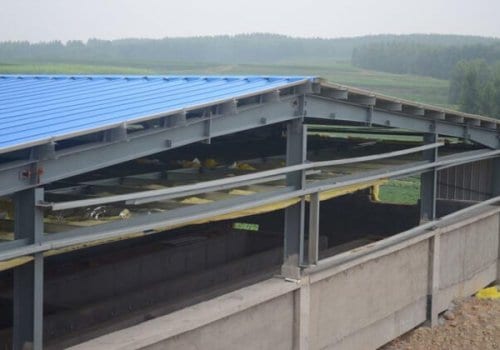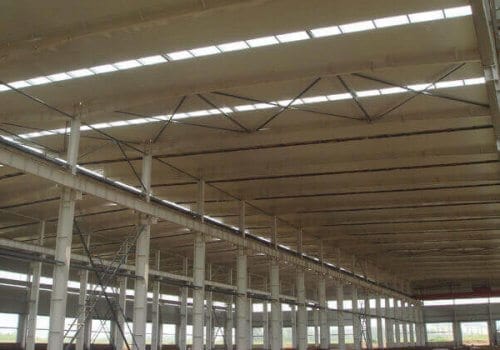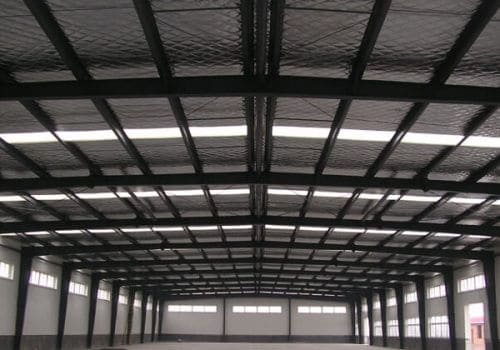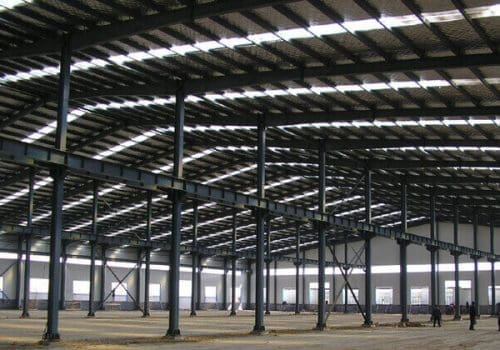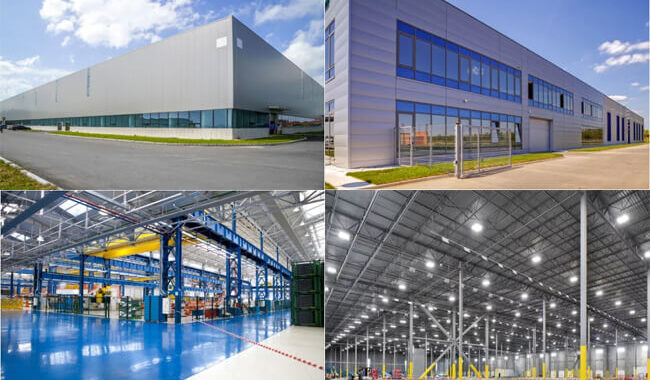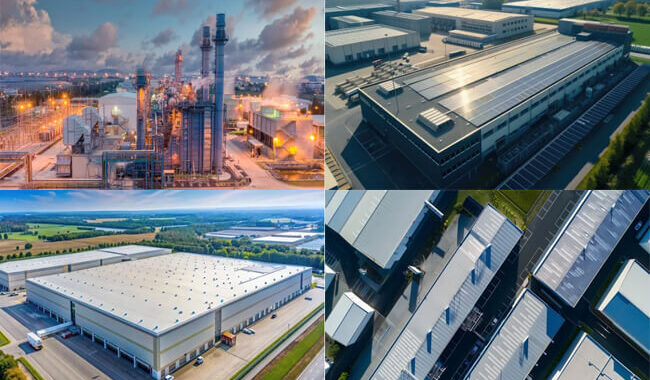As the primary building material for steel structure industrial buildings, light steel structures directly affect the stability of the main…
Earthquakes significantly impact buildings, and steel structures show strong reliability and anti-seismic performance under earthquakes. The seismic resistance of steel structures can withstand earthquake forces better than concrete structures. The steel structure’s lightweight, high strength and good ductility make it an ideal choice for post-earthquake reconstruction, which can protect people’s lives and reduce property losses.

Seismic Resistance of Steel Structures
Under the action of earthquakes, steel structure houses have high structural reliability due to the uniform material of the steel and easy guarantee of strength; the characteristics of lightweight and high strength make the steel structure houses light in weight, thereby reducing the earthquake effect on the system; good Excellent flexibility, so that the steel structure has a large deformation capacity, even under large deformation, it will not collapse, to ensure the seismic safety of the system.
Steel structures have better seismic performance than reinforced concrete structures and civil structures. The steel structure has high strength, lightweight, toughness, good plasticity, uniform material, and increased structural reliability.
Türkiye Earthquake
2023 is a year full of disasters. On February 6 this year, two 7.8-magnitude earthquakes occurred in Turkey within one day. On February 23, a 6.8-magnitude earthquake occurred in eastern Tajikistan. On the 6th, a magnitude 5.5 earthquake occurred in Dezhou, Shandong, China.
The hazards of earthquakes, earthquakes above magnitude six, will cause destructive disasters. Turkey’s 7.8-magnitude earthquake caused local buildings almost to disappear. What does a 7.8-magnitude earthquake feel like? A Turkish expert once said that the quake occurred at the junction of four major fault zones, and its power was equivalent to the simultaneous explosion of 130 atomic bombs. The opening work in 2023 was a devastating disaster—one of the strongest earthquakes to hit Turkey since. Overnight, thousands of buildings collapsed and were flattened, leaving tens of thousands of people homeless.
The frequent occurrence of earthquakes has made more people pay attention to them. The damage to property and life caused by the quake is enormous. What should we do in the face of a sudden earthquake so as not to panic and carry out necessary self-rescue? It is essential to have specific knowledge of shock absorbers.
How to Avoid an Earthquake
1. Master some knowledge of earthquake precursors. Be good at observation; there will be some extraordinary phenomena in the earthquake precursor, which can be used as the basis for your shock absorption to help you escape.
1) Before an earthquake, the most common thing is that animals react abnormally. It is often said that chickens fly and dogs jump, cows and horses panic, mice come out of their holes during the day, hibernating snakes come out of their holes and freeze to death outside, fish jump around, and toads come out of their holes in groups, etc.
2) Well water and groundwater are abnormal, muddy, warming, bubbling, etc.
3) Abnormal weather, sweltering heat before the earthquake, anxiety and irritability, long drought without rain or continuous rain, scattered yellow fog, dark daylight, strange winds, hail (blizzard) in June, etc.
4) Bass drum anomaly refers to the appearance of a bulge on the ground before an earthquake. Abnormalities similar to floor drums include ground fissures and ground subsidence.
5) Electromagnetic anomalies refer to the abnormalities of household appliances, such as radios, televisions, fluorescent lamps, etc., before the earthquake. The most common electromagnetic anomaly is radio failure, and it is also common for fluorescent lights to illuminate before the quake.
2. How to deal with an earthquake?
1) Indoors: People on the first floor should quickly evacuate to the outdoor open space with protective objects on their heads, and people on other feet should take refuge on the spot.
Hide under or after sturdy furniture; in rooms with load-bearing walls and small spaces, such as bathrooms, storage rooms, etc. Protect your head with your arms or a quilt, pillow, etc.
2) Outdoors: Pay attention to protecting your head, and choose an open and empty place to squat or lie down.
Avoid dangerous places or objects such as tall buildings, trees, rivers, and high-voltage lines.
3) On the way of driving: If you are driving, you should slow down, pull over and stop the car, and look for an open place to escape. After the vehicle came to a complete stop, he quickly got out of the car with his head in his arms and left to avoid it. If you are on a bus or a coach, hold on to the handrails, lower your center of gravity, and hide near your seat.
4) In the ruins: keep calm and save energy.
Remove the sundries in front of the face and chest, remove the dust near the mouth and nose, and keep breathing unobstructed.
Use a mobile phone or knock on a stone to signal distress.
5) Do not drink unboiled water after the earthquake
Earthquakes often cause water pollution. Drinking water sanitation is critical to preventing and controlling intestinal infectious diseases after disasters. Do not eat contaminated food, do not eat livestock, poultry, fish, shrimp, etc., that have died of illness or unknown cause; do not eat spoiled or moldy food; do not eat vegetables and fruits that have rotted under the ground.
3. Pay attention to prevent the occurrence of aftershocks.
Aftershocks of different sizes occur after a strong earthquake. The destructive power of aftershocks cannot be ignored. After the earthquake, many houses were damaged, and aftershocks may directly cause the houses to collapse. Aftershocks in different areas may trigger secondary disasters like landslides, rolling stones, etc. Strengthen the education of school teachers and students on earthquake prevention knowledge, improve the earthquake prevention awareness of teachers and students, facilitate the organization of shock absorption when aftershocks occur, and reduce casualties.
The earthquake in Turkey this year caused countless house collapses, which caused great harm to people’s lives and safety, and the quality and safety of buildings received special attention. General building standards must reach an earthquake resistance of magnitude eight or above. However, countless buildings collapsed in the 7.8-magnitude earthquake in Turkey, which is enough to show that the construction quality is not up to standard. The number of casualties in Turkey and Syria exceeded 23,000.
Earthquake resistance should be considered in the design of steel structure buildings.
In stark contrast, the Hunutlu power plant built by China was undamaged in the earthquake, and its power generation facilities are still operating normally. In contrast, two nearby Turkish power plants were forced to shut down due to the collapse of the plant and damaged equipment. Under such circumstances, the surrounding medical treatment, rescue, and residential electricity consumption depend on the Hunutlu Power Plant. Chinese staff worked overtime to ensure the power plant’s continuous power supply, significantly contributing to Turkey’s post-earthquake rescue work.
Objectively speaking, the geographical environment of the Hunutlu coal-fired power plant is not very good. Medium-hard soil and soft rock are the main components of the soil layer, and low mountains and hills dominate the surrounding area. The terrain has large fluctuations, with a drop of up to 80 meters. The most extensive unfavorable condition is that the site is located in the first earthquake zone in Turkey, the seismic acceleration value is 0.40g, and the seismic fortification intensity of the building has reached 9 degrees. According to my country’s building regulations, the seismic fortification intensity reaches 6 degrees, and seismic fortification must be carried out, even if the building is in Turkey. Therefore, the design unit took into account the anti-seismic problem before the start of the project. The main factory building and the supply boiler room are all steel structures, using 30,000 tons of steel. The robust steel structure undoubtedly played an essential role in this earthquake resistance.
Why Steel Structure Buildings Are Earthquake Resistant
In the mode of earthquake propagation, the surface wave has a large wavelength and strong amplitude, which is the main factor causing strong damage to buildings. In areas where earthquakes occur frequently, concrete structures with poor tensile properties are prone to overall collapse under seismic wave cyclic loading. The strength of the steel structure is about eight times the strength of concrete, and the density is only 3.2 times that of concrete. In a building of the same scale, the steel structure is lighter and can withstand less earthquake energy. Coupled with the excellent flexibility of the steel structure, the energy brought by the seismic wave can be consumed through deformation, so the steel structure can not easily collapse even with large deformation.
The anti-seismic ability of steel structure buildings has been verified repeatedly, and it is also an essential choice for post-earthquake reconstruction in many places. Many prominent facilities such as schools, hospitals, and shopping malls rebuilt after earthquakes in my country have begun to adopt steel structure buildings. Life safety, but also reduce a lot of property damage!
Requirements for Seismic Resistance of Steel Structures
Lessons from previous earthquake damages should be learned in the seismic design of steel structures. In addition to improving the resistance of the structure in terms of strength and stiffness, it is also necessary to consider how to increase the plastic deformation capacity and energy dissipation capacity of the steel structure under reciprocating loads. , and the overall consideration of reducing the earthquake effect to be economical and reliable.
Choose a site and foundation that are beneficial to building earthquake resistance:
The site affects the seismic response of the structure, and the magnitude of the seismic response of the structure determines the seismic damage of the structure. Therefore, hard medium-hard soil sites should be selected in seismic design, and remedial measures should be taken when unfavorable or dangerous areas cannot be avoided.
Choose a reasonable general layout of the structure:
1) The shape of the building should be regular. The form is relatively simple. Because of the reasonably straightforward mechanical performance, the damage to the building is relatively light when subjected to an earthquake. In the seismic design, the shape of the building is required to be regular, and the structure strives to be symmetrical to reduce the deviation between the center of mass and the center of stiffness;
2) The strength and stiffness should change continuously. The stiffness and bearing capacity of the seismic structure should be uniform in the floor plane and continuous and uniform along the structural direction; there should not be layers where the stiffness suddenly weakens to avoid “weak floors” where plastic deformation is concentrated during earthquakes. , causing severe damage.
Choose a reasonable Resistance of Steel Structures:
1) It has a clear calculation diagram and a reasonable transmission path of earthquake action;
2) The structure should have multiple anti-seismic lines
(1) The seismic structural system should be composed of several sub-systems with better elasticity and connected by connecting members with better flexibility.
(2) The seismic system should have the most significant possible number of internal and external margins and a series of favorable yield zones can be consciously established in appropriate parts of the structure so that the structure can not only absorb and dissipate a large amount of seismic energy, but also be easy to repair once damaged.
(3) The structure should have good “toughness.” That is, the necessary strength, good stiffness, deformation, and energy dissipation capacity
